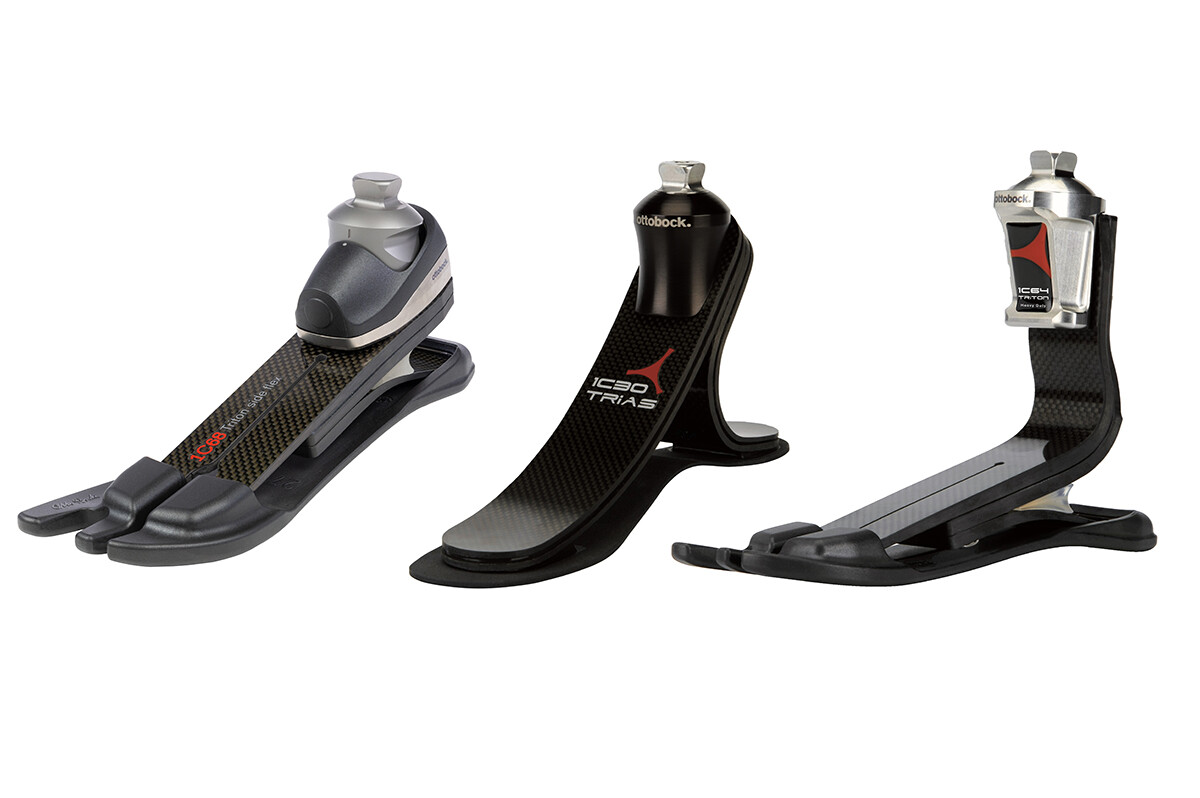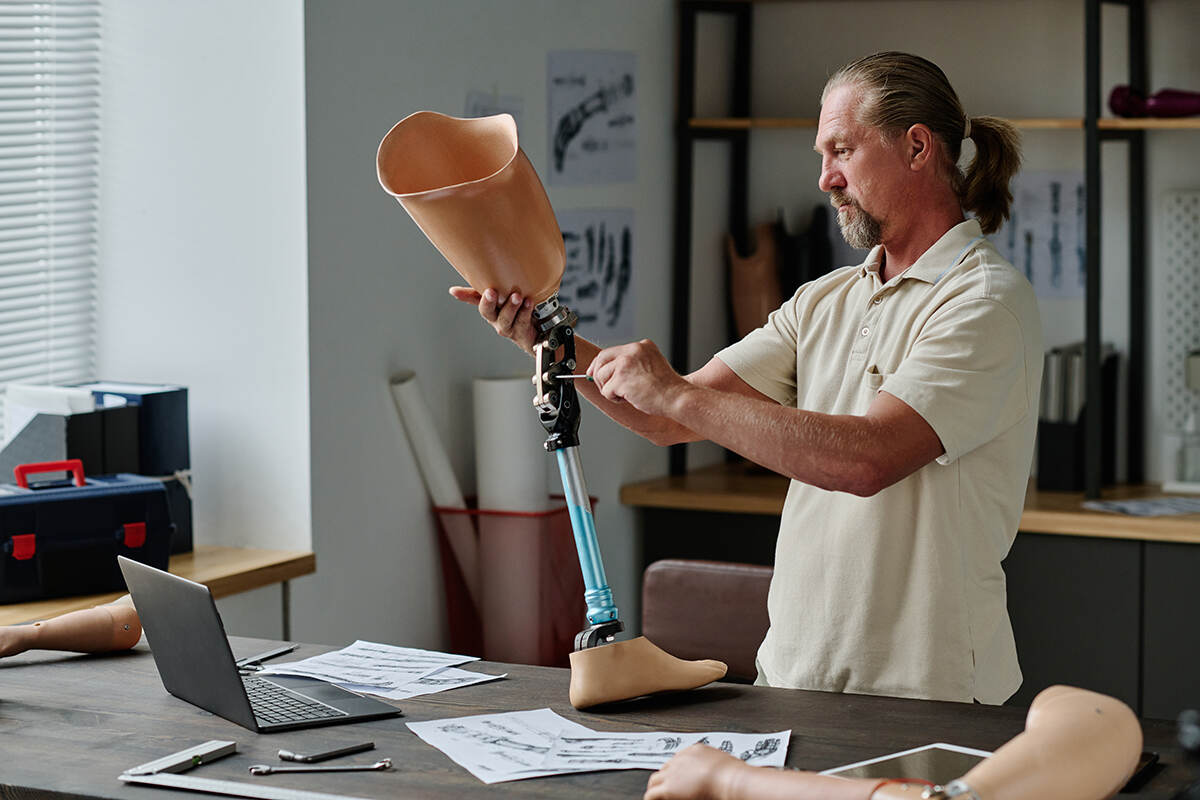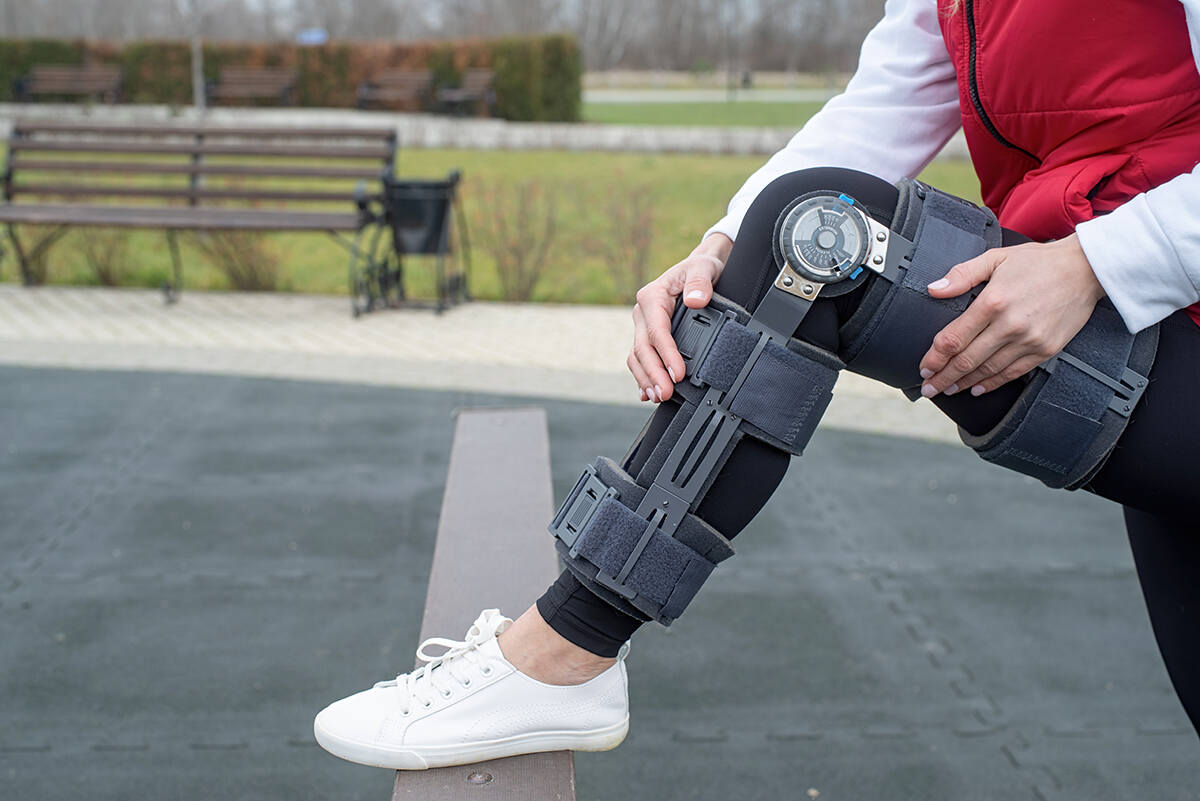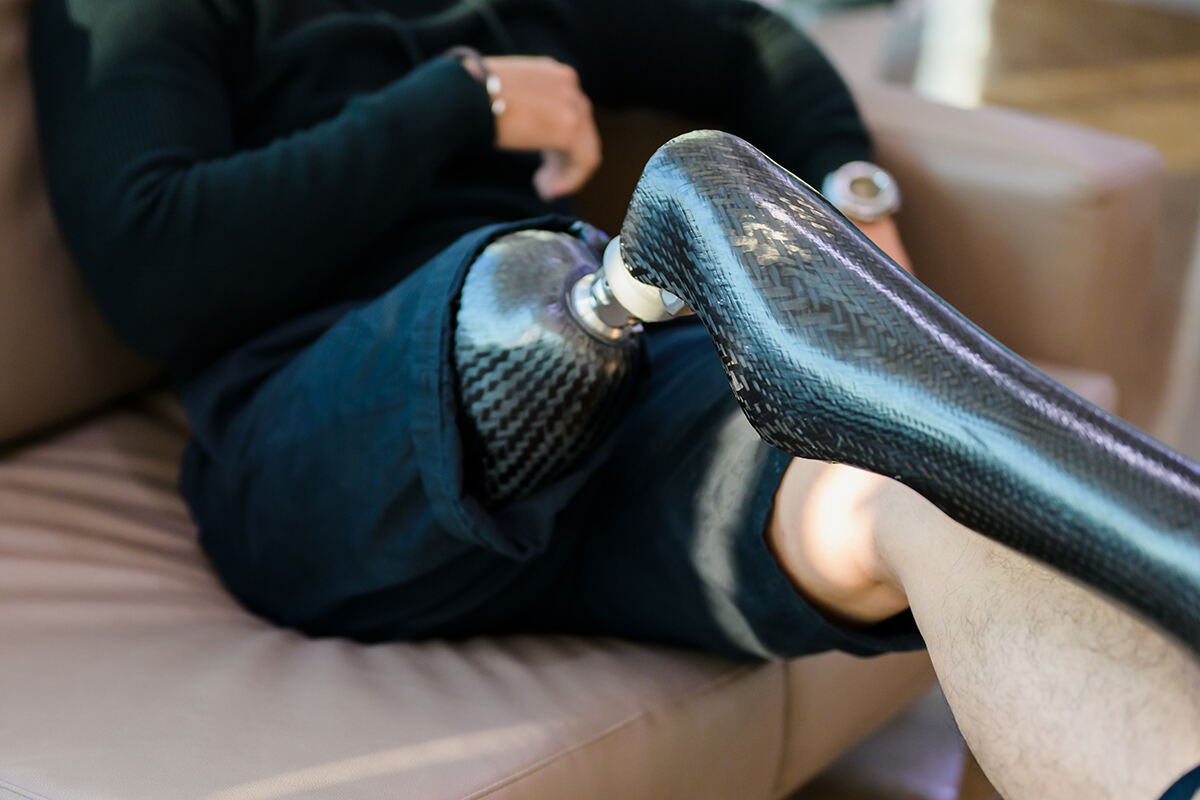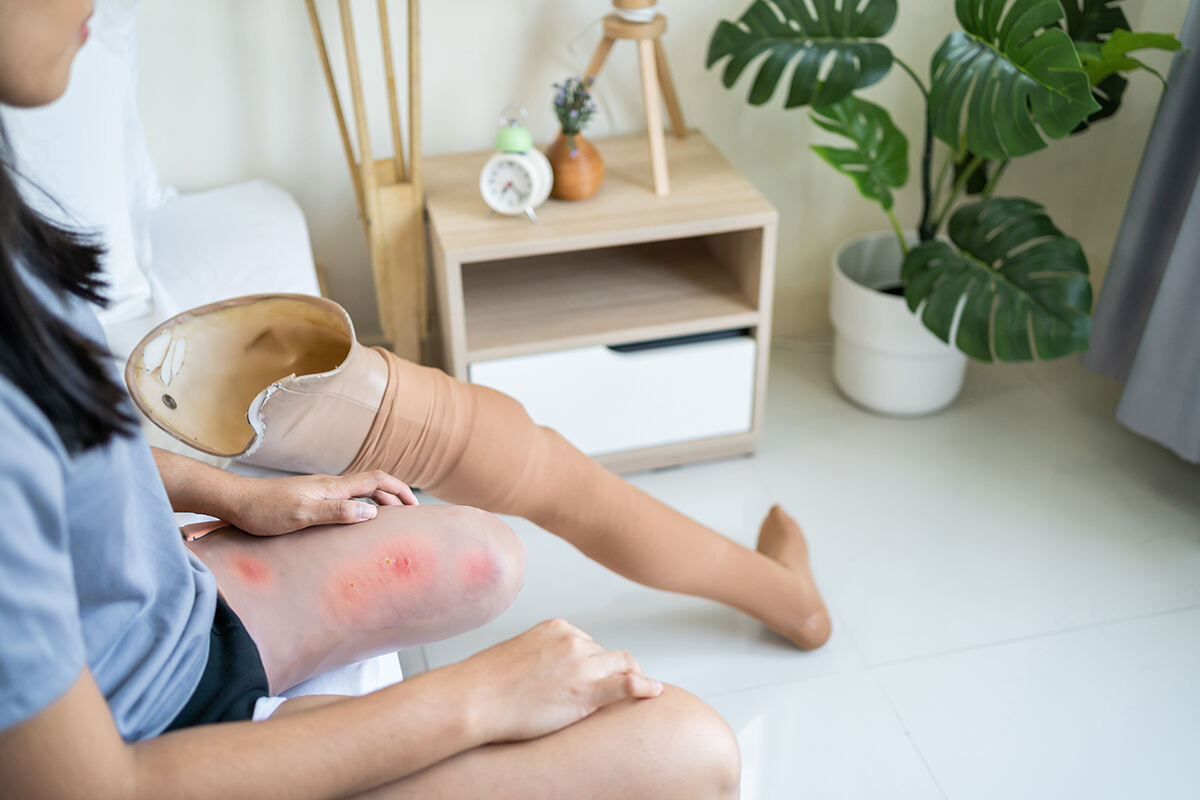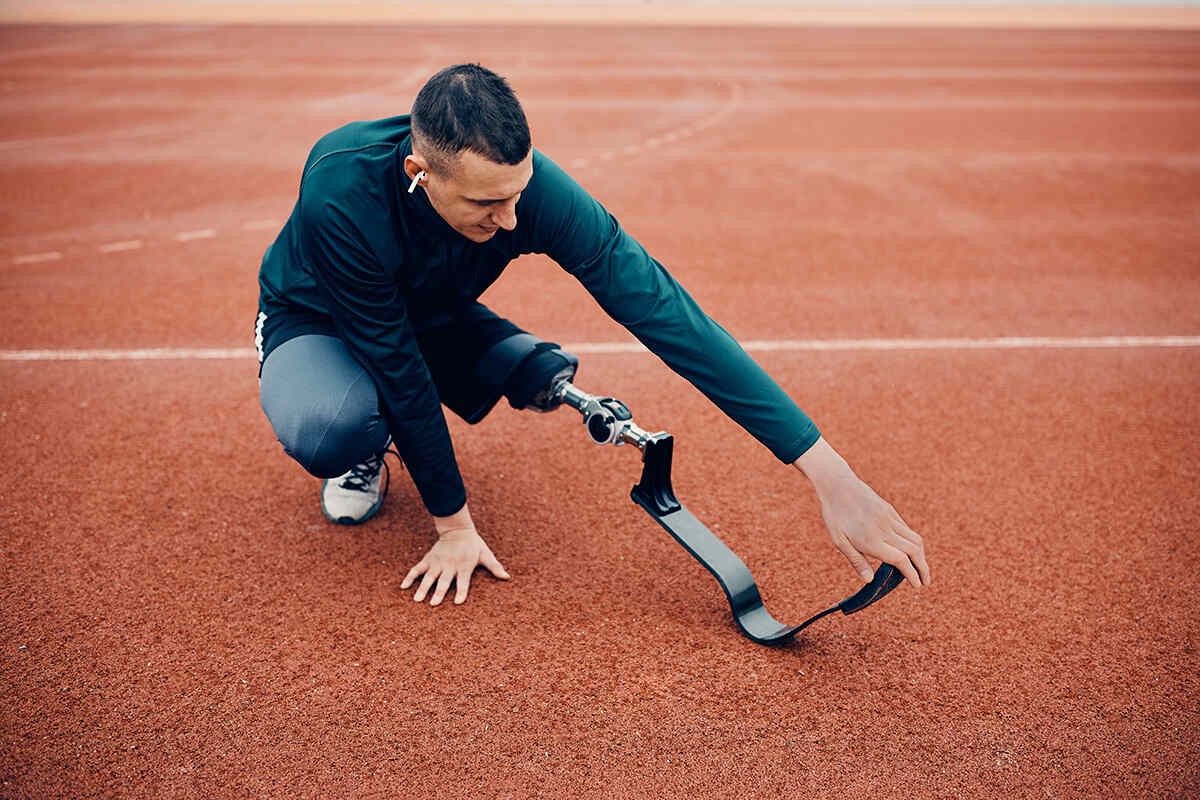Navigating the world of prosthetics can be a challenging journey, but understanding common problems with prosthetics and their solutions can make a significant difference in the lives of amputees. Empowering ourselves with knowledge about residual limb challenges, prosthetic socket issues, and coping strategies for phantom limb pain can pave the way for a smoother, more comfortable experience with prosthetic limb devices.
Key Takeaways
- Proper care and management of residual limb challenges is essential for prosthetic users.
- Amputees should work closely with healthcare professionals to ensure optimal health and comfort with their prosthetics, as well as find the right fit.
- Proactive management, modifications to the device, and access to quality care can help amputees engage in both professional and personal lives despite service disparities.
Residual Limb Challenges

The residual limb left after an amputation surgery is vulnerable to several challenges that can affect the prosthetic user’s comfort and overall health. Some of these challenges include:
- Skin breakdown
- Pressure sores
- Changes in limb shape
- Muscle tension
- Bracing
- Twisting in shoulders and back
Maintaining overall health and achieving an optimal experience with prosthetic limb devices requires proper care and management of these challenges, as highlighted in a recent prosthetics patient survey report.
Taking care of the residual limb as well as the remaining foot and leg for lower limb prosthetic users is of utmost importance. Simple exercises and stretches can promote circulation and prevent musculoskeletal overuse injuries in the residual leg and foot. For those experiencing upper limb loss, regular massages, yoga, or physiotherapy can help relieve muscle tension and aches, as well as manage phantom pain.
Skin Breakdown and Pressure Sores
Skin breakdown and pressure sores are common issues that can arise from ill-fitting sockets, tight sockets, or materials in prosthetic limb devices. These problems can lead to pain, discomfort, and potential long-term health issues, affecting the soft tissue of the residual limb. Prolonged use of a prosthesis with an ill-fitting socket can hinder rehabilitation, function, and overall health, as highlighted in various prosthetics patient survey reports.
Environmental factors within the liners, such as:
- increased skin temperatures
- sweating
- heat rash
- blisters
- contact dermatitis
can also contribute to skin breakdown and pressure sores. Prosthetic users should be aware of these risks and take necessary precautions to minimize their impact on overall health.
Preventing skin breakdown and pressure sores requires ensuring that sockets are well-fitted and made of breathable materials. Regular check-ups with healthcare professionals can help monitor for any skin issues and make necessary adjustments to the socket fit, providing a comfortable and healthy experience for prosthetic users.
Changes in Limb Shape
Changes in residual limb shape, such as volume fluctuations and shrinkage, have a considerable effect on socket fit and comfort. When there are changes in limb shape, it can lead to:
- Inadequate socket fit
- Discomfort
- Instability
- Difficulty in weight-bearing and walking
A qualified prosthetist must regularly monitor and adjust the prosthetic to guarantee an optimal fit as the limb shape changes over time.
Alterations in limb shape can also affect the comfort of a prosthetic socket, as it can lead to issues with forming and sustaining an accurate and comfortable fit. Adjustable socket designs and personalized socket fitting processes can help to address these difficulties and enhance comfort for prosthetic users.
Being proactive about monitoring and addressing changes in limb shape can significantly improve the experience of using a prosthetic limb. By working closely with healthcare professionals to make necessary adjustments, users can ensure that their socket remains comfortable, secure, and functional as their residual limb changes over time.
Managing Residual Limb Health
Amputees need to maintain their residual limb health to have a successful and comfortable experience with their prosthetic limb devices. Proper hygiene is essential, and it involves:
- Washing the limb with a mild soap and water
- Utilizing a neutral cleanser
- Assessing the condition of the skin regularly
- Wearing clean liners and socks
- Purifying the residual limb with a pH-balanced soap
Early detection and intervention require regular inspection of the residual limb for red areas, rashes, or signs of skin breakdown. It is also important to pay attention to any changes in color, texture, or temperature of the skin, as well as to address any discomfort or pain in the residual limb.
Healthcare professionals, such as prosthetists and physiotherapists, can help ensure proper residual limb care and address any concerns that arise. By maintaining open communication and actively participating in their care, amputees can minimize potential health issues and maximize their comfort and functionality with prosthetic limb devices.
Prosthetic Socket Issues

Prosthetic socket issues can have a significant impact on the comfort, mobility, and overall quality of life for amputees. Upper-limb amputees may suffer from skin issues due to the use of harness for attaching and operating mechanical prostheses. These issues include blisters, abrasions and rashes. Lower-limb amputees may also face increased skin temperatures, sweating, heat rash, blisters, contact dermatitis, and abrasions due to prosthetic use. Comfortable and functional experience with prosthetic limb devices requires addressing these socket issues.
Amputees need to find the right fit and address socket problems to enjoy a better quality of life. By working closely with healthcare professionals and being proactive in seeking solutions, amputees can overcome the challenges posed by prosthetic socket issues and achieve a more comfortable and functional experience.
Ill-Fitting Sockets
Ill-fitting sockets can cause a range of problems for prosthetic users, including:
- Persistent pain
- Skin breakdown
- Excessive perspiration
- Difficulty donning and doffing the prosthesis
- Pain or sensations in lieu of the missing limb
- Obstructed blood flow when the socket fits too tightly on the residual limb
These issues can lead to long-term physical and mental outcomes, such as health issues and diminished mobility.
Ill-fitting sockets can have severe consequences on the residual limb, including:
- Discomfort
- Alterations in the residuum
- Loss or alteration of sensation
- Increased relative movement within the socket
- Pain
- Skin breakdown
- Pressure sore development
- Tissue damage
Ill-fitting sockets can also impede the mobility and functionality of the prosthesis, causing pain and difficulty in walking or performing daily activities.
A prosthetist who can make necessary adjustments is essential to ensure a proper fit of the socket and avoid the negative consequences of ill-fitting sockets. Regular check-ups and open communication with a prosthetist can help maintain a comfortable and secure socket fit, enhancing the overall experience with prosthetic limb devices.
Socket Rigidity and Material Irritants
Socket rigidity and material irritants can contribute to discomfort and a bad fit. Some factors that can negatively impact socket fit and user comfort include:
- Liners causing heat and sweat build-up
- Strong chemicals and established irritants in prosthetic socket materials
- Epoxy resins
- Metallic allergens like cobalt
These factors can cause irritation and should be taken into consideration when selecting and fitting a prosthetic socket.
Rigid sockets can place stress on certain areas of the residual limb, resulting in discomfort and pressure points. To improve comfort, consider the following options:
- Adjustable designs: These sockets can be customized to accommodate the shape and contours of the residual limb, providing a better fit.
- Cushioning materials: Prosthetic socks can be used to add cushioning and improve comfort.
- Silicone sockets: These sockets are known for their soft and supple texture, which can make them more comfortable than thermoplastic sockets.
Amputees can select the right socket for their needs by understanding the potential irritants and issues caused by socket rigidity and materials. By working closely with prosthetists to choose suitable materials and adjust the socket fit, amputees can minimize discomfort and optimize their experience with prosthetic limb devices.
Finding the Right Fit
Finding the right fit for a prosthetic socket involves working closely with prosthetists and physiotherapists to customize and adjust sockets as needed. Prosthetists take into account factors such as:
- Proper fit
- Comfort
- Balance
- Ability to walk correctly
- Cost
- Impact
- Weight of the user
- Activities that will be undertaken
- Method of suspension
- Socket design
when customizing a prosthetic socket.
Physiotherapists play an essential role in adjusting a prosthetic socket for the correct fit. They collaborate closely with individuals who have undergone amputation to ensure that the socket is properly fitted and offers optimal comfort and function. Physiotherapists assess the residual limb, make necessary alterations to the socket, and provide instruction on proper alignment and weight-bearing.
A comfortable and functional prosthetic experience can be achieved by amputees through working closely with healthcare professionals and taking a personalized approach to socket fitting. This collaborative process not only ensures the best possible fit but also allows for necessary adjustments as the residual limb changes over time, maximizing comfort and functionality.
Phantom Limb Pain and Coping Strategies
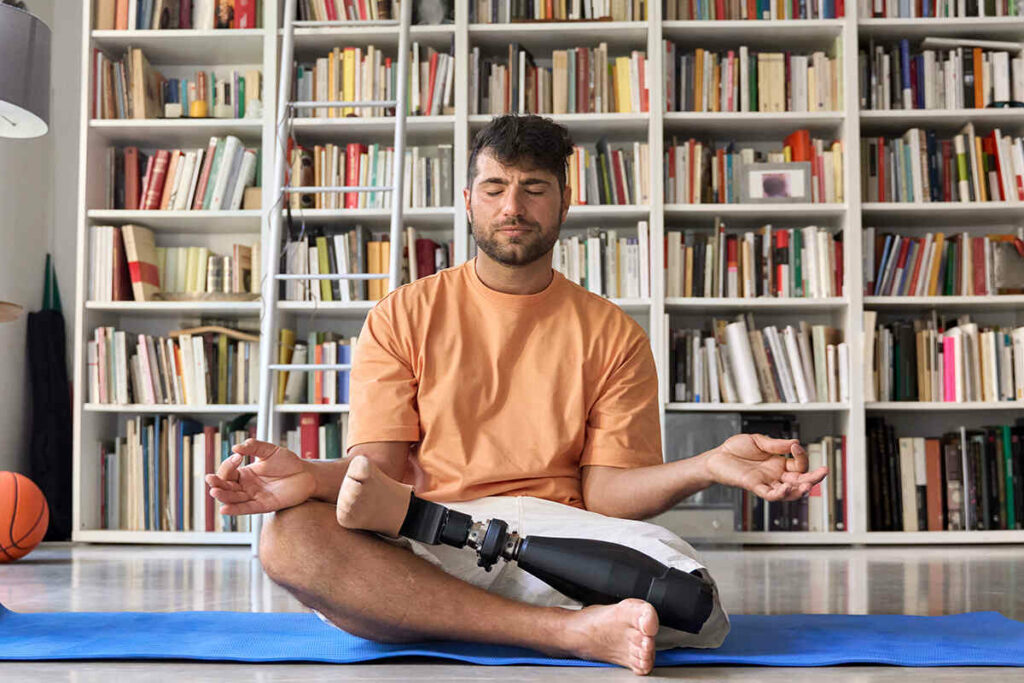
Phantom limb pain is a type of pain that affects many amputees. It is believed to be caused by damaged nerve endings, scar tissue from the amputation surgery, and emotional triggers such as stress, anxiety, and depression. Coping strategies, such as mirror therapy, can help alleviate discomfort and improve overall well-being.
Mirror therapy involves the performance of exercises with the use of a mirror, which can “teach” the brain that the amputated limb is not present and alleviate the pain.
Prosthetic Technology Limitations and Evolution

Prosthetic technology is constantly evolving, with new advancements in microprocessor-driven and activity-specific options, such as:
- Passive systems
- Body-powered systems
- Myoelectric systems
- Hybrid systems
These advancements can assist individuals in performing daily activities and recreational pursuits. However, limitations still exist, making it crucial to work with care teams to find the ideal prosthetic for each individual’s lifestyle.
Users may still face challenges, such as:
- Grips of bionic hands not being robust enough
- Lengthy maintenance intervals
- Shock resistance issues
- Limitations in low-resource settings
Despite advancements in prosthetic technology. By staying informed about the latest developments amputees can ensure they receive the most appropriate prosthetic solution for their needs and lifestyle.
Rehabilitation and Adjustment Challenges
A collaborative approach involving ongoing support and development of a personalized plan is required to address the challenges of rehabilitation and adjustment to prosthetics. Lower limb prosthetic rehabilitation is essential to strengthen legs, arms, and the cardiovascular system and to gain proficiency in walking with the new prosthetic leg.
A rehabilitation team can help amputees overcome challenges and achieve a successful and comfortable experience with their prosthetic limb devices. The team may include:
- Prosthetists, who specialize in designing and fitting prosthetic limbs
- Physiotherapists, who help with physical rehabilitation and strengthening
- Occupational therapists, who assist with daily activities and adapting to the prosthetic limb
Individuals who have undergone lower limb amputations can enhance their mobility, independence, and overall quality of life after a lower limb amputation.
Impact on Work and Social Life
The impact of prosthetics on work and social life can be significant, with fatigue, ill-fitting sockets, and limitations in hobbies affecting independence and overall quality of life. Physical strain and discomfort caused by prolonged use of a prosthetic limb can lead to a reduction in productivity and efficiency at work, as well as impede the individual’s ability to participate in social activities.
The impact of prosthetics on the work and social life of amputees can be minimized by managing fatigue effectively through adequate rest, regular exercise, and modifications to the prosthetic device. This proactive approach can help enhance overall well-being and allow amputees to fully engage in their professional and personal lives.
Service Disparities and Access to Care
Service disparities and access to care can vary greatly depending on location and healthcare system, potentially impacting the quality of prosthetic rehabilitation and overall patient outcomes. Some consequences of service disparities include:
- Disparities in sockets and other prosthetic components
- Reduced time spent between clinicians and patients
- Decreased functional outcomes
- Increased waiting times
Amputees can receive the support and services they need for a successful prosthetic experience by being aware of these disparities and advocating for better access to care.
Frequently Asked Questions
What is the most common problem with today’s prosthetics?
The most common problem with today’s prosthetics is limited mobility and lack of sensory feedback. This can lead to reduced functionality, discomfort, and difficulty using the prosthetic.
What are some ethical issues with prosthetics?
Ethical issues with prosthetics include the lack of pain feedback that could put users in dangerous situations, as well as confusion between artificial and biological limbs in emergency scenarios which could lead to harm. Additionally, there are common concerns regarding different types of sensory prostheses.
What happens if you wear a prosthetic for too long?
Wearing a prosthesis for too long may result in skin breakdown, increased temperatures of the residual limb, heat rash, blisters, contact dermatitis, abrasions and painful ingrown hairs. Prolonged use can further lead to severe skin infections which need to be addressed immediately. This is from person-to-person as some people can wear their prostethic all day long with no issues.
What are the disadvantages of prosthetic legs?
The disadvantages of prosthetic legs can include intact limb pain, back pain, poor balance, instability, fatigue, irritation and skin issues, socket discomfort, and a current prosthetic not meeting one’s needs.
How can I prevent skin breakdown and pressure sores in my residual limb?
To prevent skin breakdown and pressure sores in your residual limb, ensure you have a well-fitted socket, use breathable materials, practice proper hygiene, and regularly monitor your residual limb.





